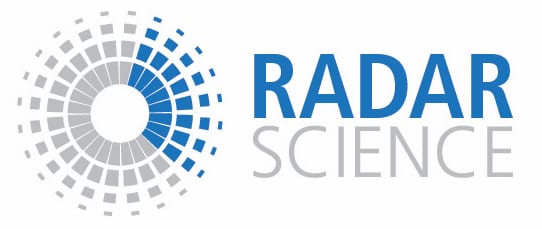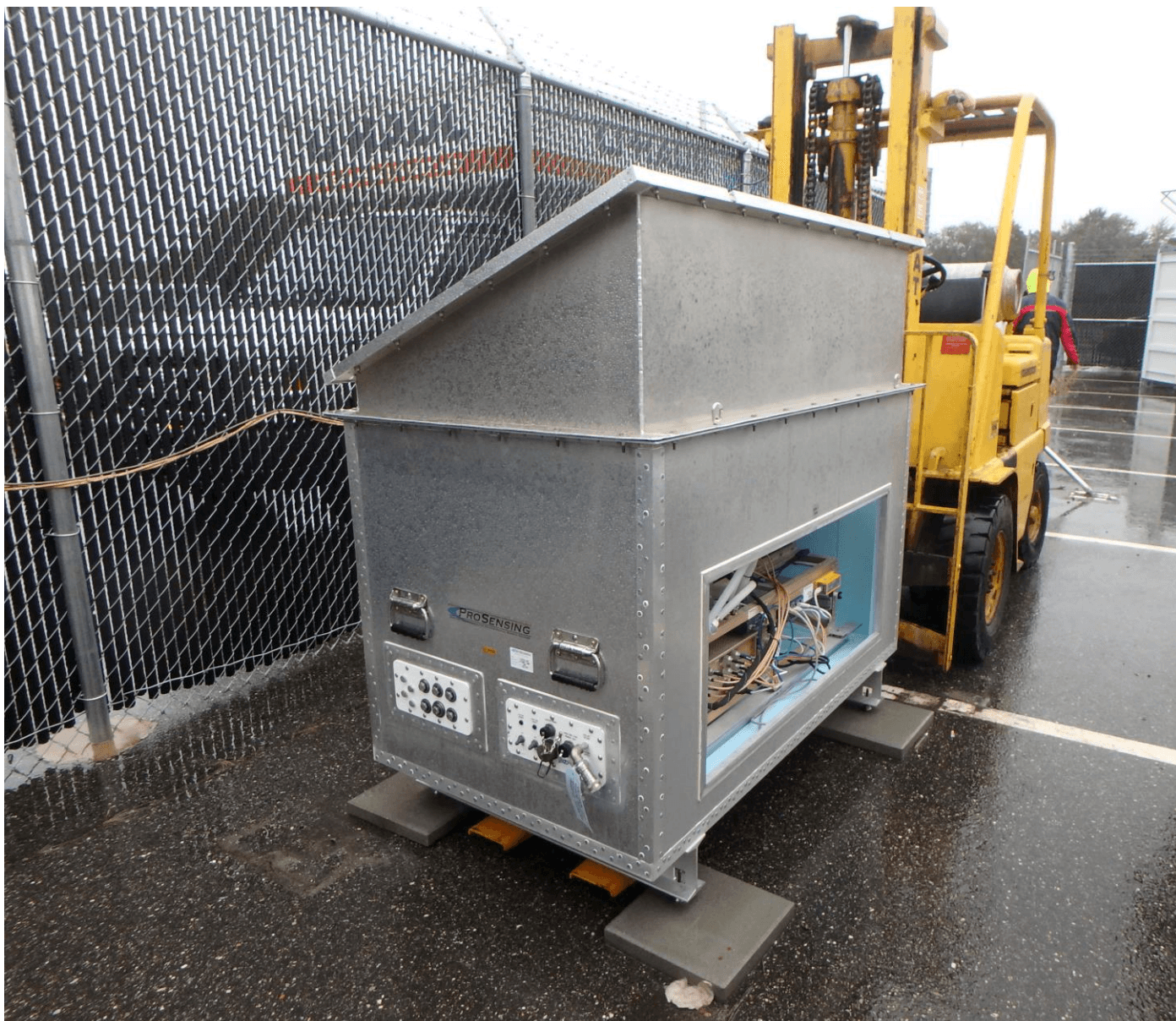The system was built by Prosensing Inc and was initially developed as an airborne system and was integrated on the Center for Interdiscplinary Remotely-Piloted Aircraft Studies (CIRPAS) Twin Otter aircraft. In 2016, CIRPAS transferred the system from the Navy to Brookhaven National Laboratory. In 2011 with funding from NPS, ProSensing designed and manufactured a new metal frame to hold the newly-purchased 24-inch parabolic dishes antennas and all the CFMCW electronics, including the server computer and the power supplies. The requisite connections to the CFMCW hardware are a standard AC power line and a LAN (Internet) connection. When operating from the ground, the use of larger antennas presents improvement in the radar’s sensitivity over the 12-inch antennas used in airborne calibration.
The system was recently refurbished by Prosensing Inc. As part of the refurbishing and upgrade, Prosensing Inc. designed and fabricate an environmental enclosure to host the airborne radar system and make it suitable for ground-based observations.
In addition, they installed durable cover over the antenna radome to allow the environmental enclosure to be used as a shipping container for the radar, conduct a full check-up of the radar electronics and computers and replace any malfunctioning components and performed radar system components characterization and provide calibration constant for the radar system with the new antennas. The system was renamed to “ROGER” to honor the pioneered contributions of Dr. Roger Lhermitte in the development of 94-GHz Doppler radars. The system is currently operational at the SBU-BNL Radar Observatory. Images with the latest data from its operations can be found here.



